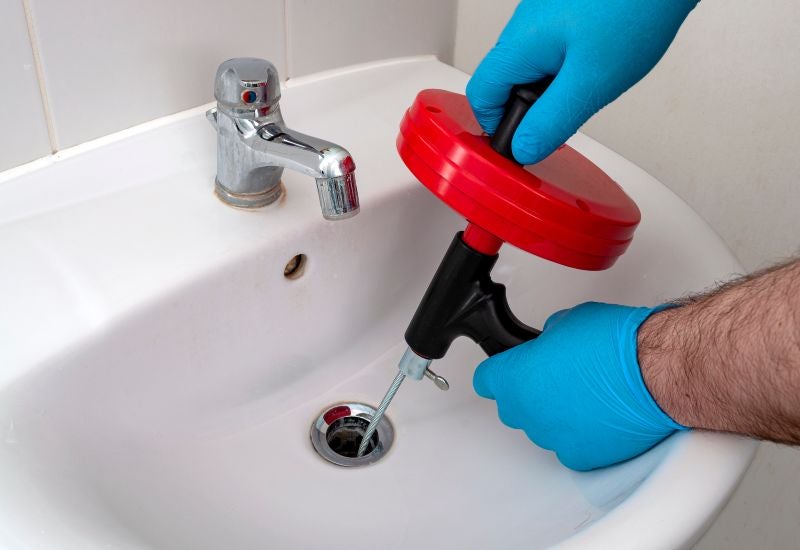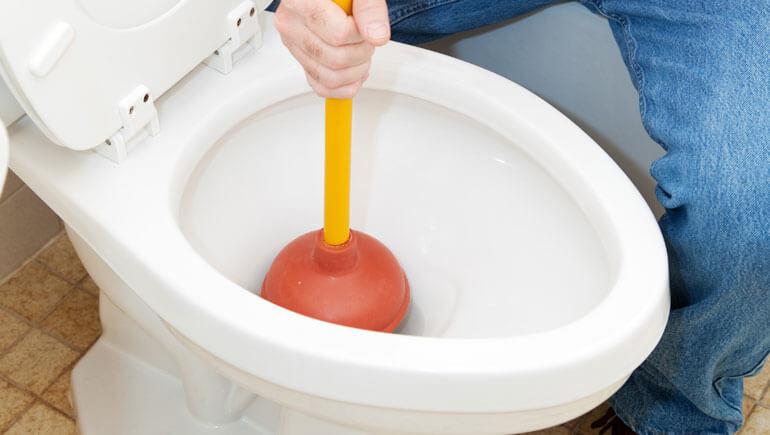Improving Plungers and Drain Cleaner: Expert Methods
Improving Plungers and Drain Cleaner: Expert Methods
Blog Article
The writer is making a few great observations relating to A Guide to Plungers (and How to Use Them) as a whole in the content following next.

Intro
Correct maintenance of family drains pipes is important for avoiding obstructions and ensuring smooth water circulation. One of the secret tools in every property owner's toolkit is the bettor, together with numerous drain cleaners made to take on persistent clogs effectively. This write-up checks out just how to make use of plungers and drain cleaners efficiently to keep your drains flowing openly.
Section 1: Comprehending Plungers
Types of Plungers
There are several kinds of plungers readily available, each created for various types of drains and obstructs. The most typical types include cup plungers, flange bettors, and accordion plungers.
Just How Plungers Work
Plungers deal with the principle of creating pressure and suction to remove obstructions. When properly applied over a drainpipe, they produce a vacuum that can take out particles or separate blockages.
Selecting the Right Bettor
Selecting the best plunger depends on the type of drainpipe and the nature of the obstruction. Mug bettors are excellent for sinks and bathtubs, while flange plungers are better matched for commodes because of their style.
Common Blunders with Bettors
Preventing these blunders guarantees reliable plunging: inappropriate seal around the drainpipe, insufficient pressure, and unclear bordering particles.
Section 2: Using Plungers Effectively
Prep work
Before diving, guarantee the bettor covers the drain completely and creates a tight seal. Clear any type of visible particles around the drainpipe opening.
Method
Beginning with gentle plunging activities to build suction. Boost stress progressively, utilizing a constant rhythm. Repeat as essential up until the drain removes.
Fixing Tips
If plunging doesn't function, attempt adjusting the seal, using petroleum jelly for a better seal, or making use of a different sort of plunger.
Section 3: Recognizing Drainpipe Cleaners
Types of Drain Cleansers
Drain pipes cleansers can be chemical or chemical. Chemical cleaners make use of solid chemicals to liquify obstructions, while chemical cleaners use natural enzymes to break down organic matter.
How Drainpipe Cleansers Work
Chemical cleaners react with obstructions to liquify them, while enzymatic cleaners break down organic products like hair and grease without hurting pipes.
Safety and security Factors to consider
Constantly use gloves and eye protection when using chemical drain cleaners. Make sure sufficient ventilation and adhere to manufacturer instructions very carefully.
Eco-Friendly Alternatives
Consider using vinegar and baking soft drink or enzyme-based cleansers for eco-friendly options that are safer for pipes and the environment.
Section 4: Using Drain Cleaners Effectively
Application Techniques
Put chemical cleansers straight right into the drain opening. Enable them to work for the recommended time prior to purging with hot water. Enzymatic cleansers must sit overnight.
Safety measures
Stay clear of blending various types of cleaners, as this can produce harmful fumes. Never ever utilize chemical cleansers combined with a bettor, as spilling can take place.
Taking Care Of Persistent Obstructions
For relentless obstructions, take into consideration making use of a pipes snake or calling an expert plumbing to prevent damage to pipelines.
Final thought
To conclude, understanding how to make use of bettors and drain cleansers successfully is necessary for preserving healthy pipes systems. By choosing the right devices and methods, property owners can take on minor clogs and avoid major pipes issues down the line.
4 DIY Ways to Unclog Drains
Wire Hanger
This age-old technique has been used by many an amateur plumber – to much success. Take any wire hanger, deconstruct its shape and leave a small hook shape on the end. Time to go fishing! Remove the shower or sink drain cover and snake the wire into the drain, wiggling and rotating it as you push it through. Dispose of the gunk that you remove and flush the drain with hot water. Rinse with a pan of boiling water for best results.
Plunger
Creating a suction in your drain can break up clogs caused by hair and soap residue build up. First, make sure you are using the correct type of plunger, one specifically for sinks or tubs. They are typically smaller than regular toilet plungers and often have a shallow suction cup. Regular plungers can work too but we’d recommend cleaning them first and finding a way to create better suction over the drain.
Baking Soda and Vinegar
This technique is a classic – and one of the most popular DIY drain unclog methods. Pour one cup of baking soda and one cup of vinegar down the drain and allow it to work its magic overnight. The next morning, flush the drain with boiling water. Repeat if necessary.
Drain Snake/Hair Clog Tool
If you know your clog is caused primary by hair, a drain snake/hair clog tool might be your best option. These tools can be purchased for under $10 at any hardware store and work well so long as the clog isn’t too deep in the drain.
https://www.callcatons.com/blog/four-diy-ways-to-unclog-drains/

Application Techniques
Put chemical cleansers straight right into the drain opening. Enable them to work for the recommended time prior to purging with hot water. Enzymatic cleansers must sit overnight.
Safety measures
Stay clear of blending various types of cleaners, as this can produce harmful fumes. Never ever utilize chemical cleansers combined with a bettor, as spilling can take place.
Taking Care Of Persistent Obstructions
For relentless obstructions, take into consideration making use of a pipes snake or calling an expert plumbing to prevent damage to pipelines.
Final thought
To conclude, understanding how to make use of bettors and drain cleansers successfully is necessary for preserving healthy pipes systems. By choosing the right devices and methods, property owners can take on minor clogs and avoid major pipes issues down the line.
4 DIY Ways to Unclog Drains
Wire Hanger
This age-old technique has been used by many an amateur plumber – to much success. Take any wire hanger, deconstruct its shape and leave a small hook shape on the end. Time to go fishing! Remove the shower or sink drain cover and snake the wire into the drain, wiggling and rotating it as you push it through. Dispose of the gunk that you remove and flush the drain with hot water. Rinse with a pan of boiling water for best results.
Plunger
Creating a suction in your drain can break up clogs caused by hair and soap residue build up. First, make sure you are using the correct type of plunger, one specifically for sinks or tubs. They are typically smaller than regular toilet plungers and often have a shallow suction cup. Regular plungers can work too but we’d recommend cleaning them first and finding a way to create better suction over the drain.
Baking Soda and Vinegar
This technique is a classic – and one of the most popular DIY drain unclog methods. Pour one cup of baking soda and one cup of vinegar down the drain and allow it to work its magic overnight. The next morning, flush the drain with boiling water. Repeat if necessary.
Drain Snake/Hair Clog Tool
If you know your clog is caused primary by hair, a drain snake/hair clog tool might be your best option. These tools can be purchased for under $10 at any hardware store and work well so long as the clog isn’t too deep in the drain.
https://www.callcatons.com/blog/four-diy-ways-to-unclog-drains/

I stumbled upon that article on Here's How to Correctly Use a Toilet Plunger while doing a search on the search engines. Liked our posting? Please quickly share it. Let someone else check it out. Many thanks for taking the time to read it.
Schedule Service Report this page